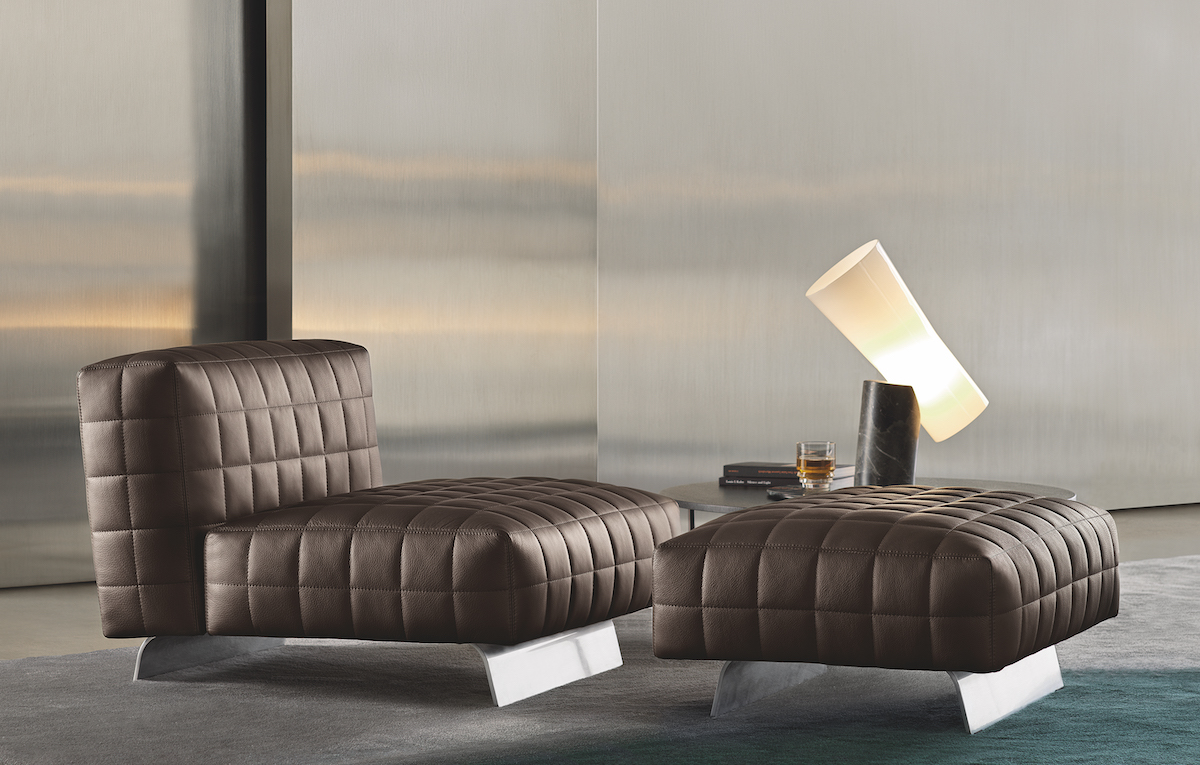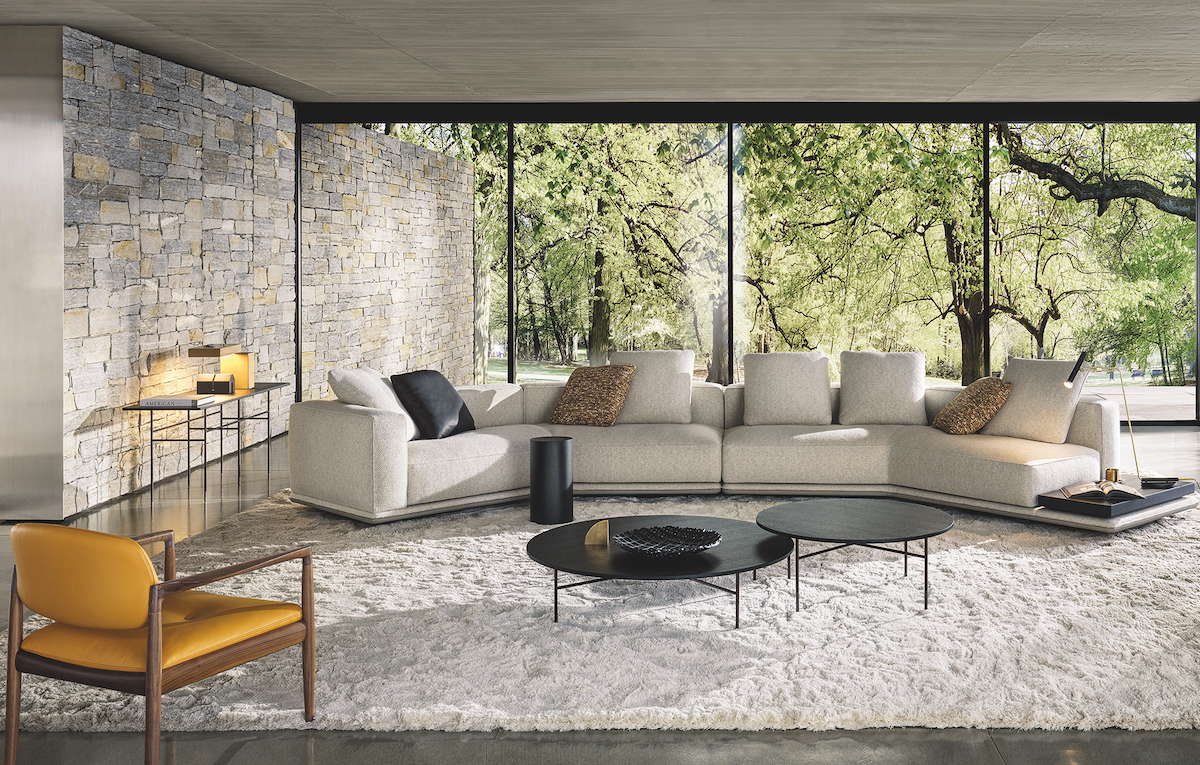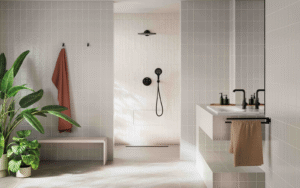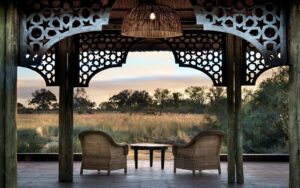Italian furniture brand Minotti has arguably made the most noise at Salone del Mobile 2022 than any other brand when presenting its 2022 Collection to the world for the first time. Editor Hamish Kilburn is in Milan with the team at Minotti London to exclusively meet this year’s designers and to explore the hero products, which includes a nod to a ’70s British icon…
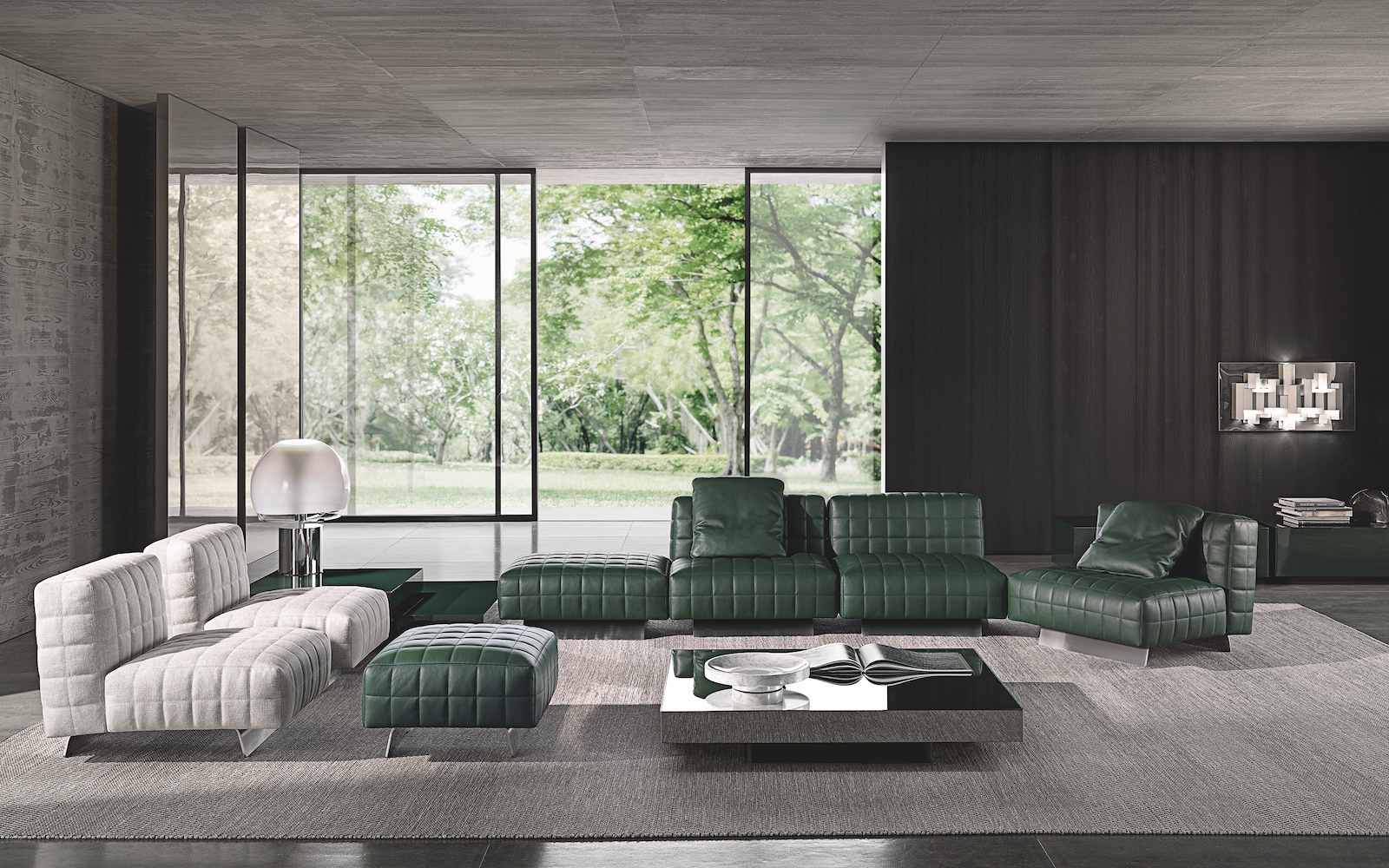
American graphic designer, Saul Bass, once remarked that ‘design is thinking made visual’. In a new era that is working hard to rebuild and re-explore what was missed over two years of forced hibernation, Salone Del Mobile 2022 is undoubtably ‘thinking made visual’. One brand that has arguably been working smarter than all others during the fair to make up for lost time is Minotti, showcasing its 2022, 2021 and 2020 collections in its largest ever stand (3,200 square metres), which was more reminiscent of a high-end boutique pop-up hotel than an exhibition area.
Salone del Mobile in Milan has long been considered the international design event in the global calendar; the ‘Mecca’ of design, many would argue. It attracts thousands of designers and architects who migrate to the exhibition venue on the outskirts of the city to experience new, innovative products born from seamless collaborations, deep research – in both materials and form – as well as the desire to meaningfully challenge conventional approaches in design. It is where leading luxury brands can peacock their feathers in a setting that effortlessly evokes a new way of thinking, and quite possibly usher in a new era in luxury-lifestyle design and hospitality.
This year, in the wake of the pandemic that put up a solid fight to stall and disrupt the show going ahead as usual for two long years, Minotti was determined to turn up the volume in the first full-scale Salone del Mobile since 2019. The brand’s products were contained within its own perforated architectural shell, and displayed over two floors. It cleverly and seamlessly sheltered protagonist products from the collections that have emerged over the last three years – it has been an apt nod to what we missed in recent years, allowing visitors to see, feel and experience the products, in a personal environment, perhaps for the first time since the Covid-19 crisis.
Each year, Minotti creates a stop-the-press level of design phenomenon that no visitor attending the fair can afford to avoid – and this year was no exception. With its legacy and reputation of manufacturing some of the finest furniture pieces in the world, it’s the brand’s somewhat recent decision – five years ago – to open up its family to hand-selected designers that has really has amplified Minotti to an engaged global audience. With the always iconic Rodolfo Dordoni leading the creative direction, world-renowned design studios, such as MK27, GamFratesi and this year, Inoda+Sveje, have allowed Minotti to break away from the conventional to instead break pre-existing creative boundaries while also maintaining its elegant form.
One of this year’s hero products, no doubt, came from Dordoni himself, who is Minotti’s longest-standing collaborator. Named the Twiggy, to give a nod to British 1970s, the item stands out for its ability to ‘revolutionise’ living spaces with unprecedented ideal of timeless beauty. The family of seating originated as a single armchair in the small, large and deep versions, with or without armrests, but embellished with stitching that reveals the depth of the brand’s manufacturing know-how combined with its striking ability to make even the most sculptural seats extremely comfortable. The Twiggy seating elements have rigorous geometric shapes but are extremely comfortable and enveloping, covered in leather, nubuck or fabric and embellished with refined stitching.
The curved, dynamic design of the base, made of semi-glossy polished aluminium or aluminium with a black coffee colour polished varnish, is one of the details that contribute to making these seats unique and destined to redefine the concept of style.
The other new items that were displayed in various settings were…
Goodman, designed by Rodolfo Dordoni
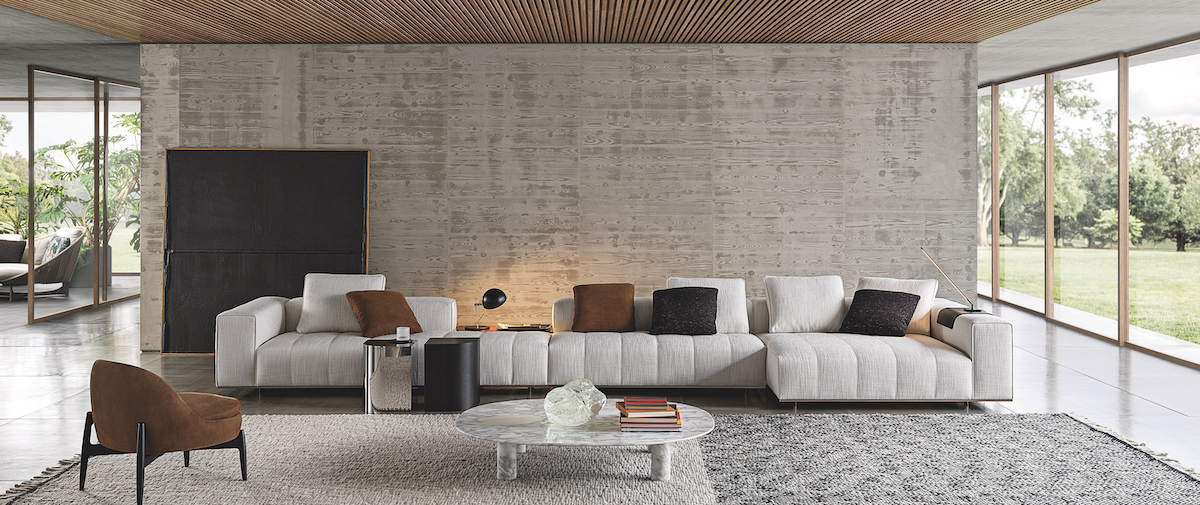
Image caption: Goodman designed by Rodolfo Dordoni. | Image credit: Minotti
Continuing to be inspired by the 1970s – in particular the graphic character of those years – Dordoni has designed Goodman. In this piece, the mark of the matelassé stitching, typical of the Minotti’s tailoring process, draws shadow and light on the seat, creating the sensation of a quilted cross-padding. The system is suspended from the floor on refined bronze or polished chrome metal feet, deliberately set back from the edge, and a perimeter frame that matches the same finish; the optical effect of suspension certainly enhances the softness of the product, offering an extremely comfortable experience.
Horizonte, designed by MK27 (Marco Kogan)
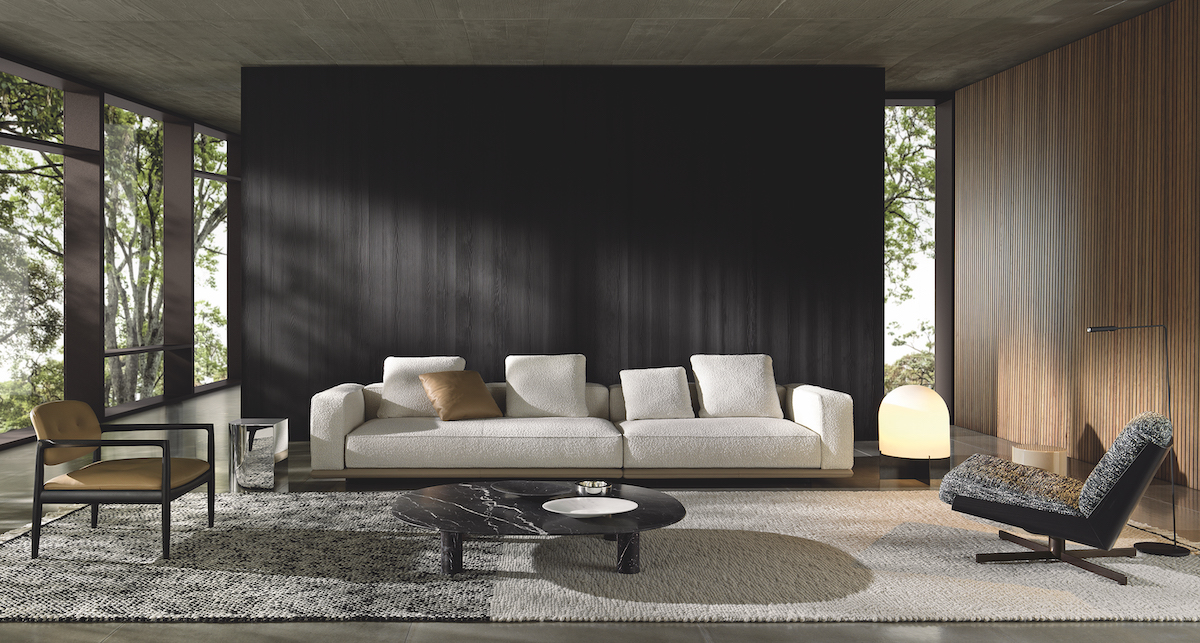
Image caption: Horizonte, designed by MK27. | Image credit: Minotti
As often with design, it is only when understanding the journey from concept to completion when one really understands the impact and significance of the product’s creation – and what that means. Marcio Kogan described the studio’s Horizonte range, for example, as starting from a line, the horizon. The pieces were formed from his imagination to see these modular pieces as clouds converging together in the air; an ever-evolving series of furniture pieces.
Yoko, Sendai and Lars, designed by Inoda+Sveje
Yoko, Sendai and Lars are the three new furniture pieces that launch while marking the inaugural collaborative project between Minotti and Milan-based design studio Inoda+Sveje. Minotti describes this collaboration as ‘two worlds connecting’, referring to the the two owners’ separate heritages – one Japanese and the other from Denmark. But, in reality, these three protagonists within the 2022 Collection are the result of three cultures combining, including Minotti’s Italian heritage. The tread that connects each piece is the language of minimalism, told is various ways.
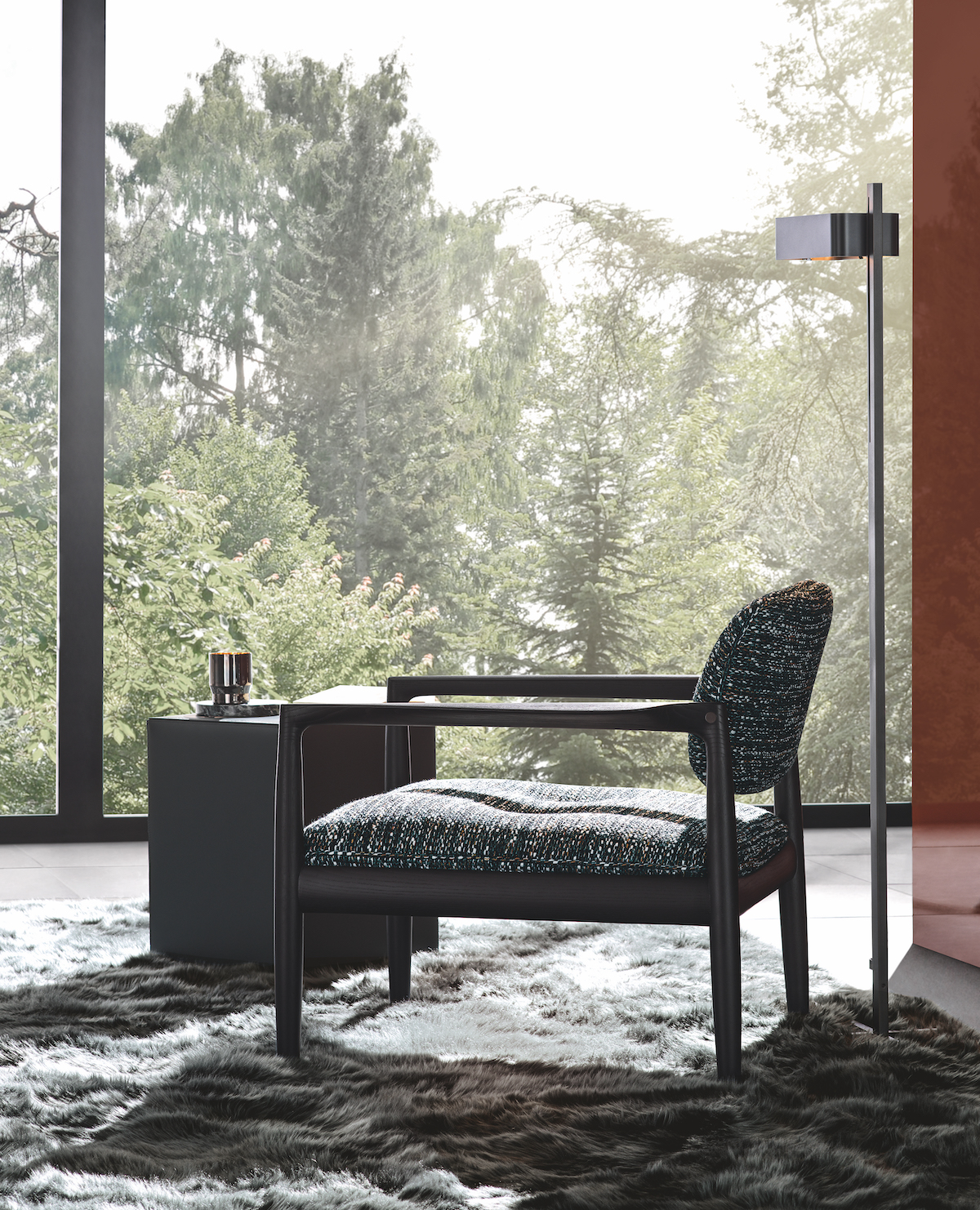
Image caption: Yoko, designed by Inoda+Sveje. | Image credit: Minotti
Yoko, a light and elegant seating design; a Japanese name and Scandinavian lines that come together in a piece of furniture with an aesthetic matrix, flavoured by both cultures. The continuous cross-reference between the two cultures, their styles and manufacturing skills shapes a project composed of an armchair, a dining armchair and an ottoman bench characterised by a dual lightness: physical and aesthetic. Delicate and sinuous lines, created with precious cabinet-making interlocking techniques that enrich the structure of legs and armrests in solid ash open pore wood lacquered with a Liquorice colour, or in solid Canaletto walnut stained Light Brown, a chromatic choice that lends a more decisive tone to the elegance of the silhouette.
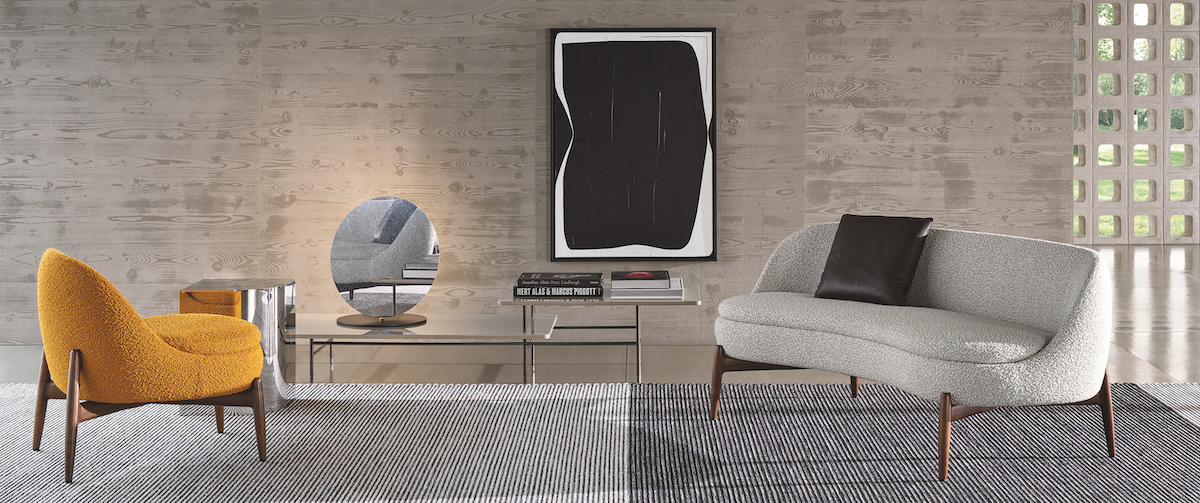
Image caption: Sendai, designed by Inoda+Sveje. | Image credit: Minotti
Named after the city of trees, Sendai, this line of furnishing pieces consists of a small sofa, an armchair and dining and lounge small armchairs. Like slender trunks, the elegant, polished legs, in Canaletto walnut solid wood stained Light Brown, or Liquorice lacquered ash, rest on the ground, lifting the enveloping upholstered body and creating a soft rhythm of vertical lines. The possibility of having both the armchair and the dining and lounge small armchairs also in the 360-degree swivel version with return (base in polished Bronze-coloured varnished metal, with sheathed spokes in solid ash with an open-pore Liquorice-coloured lacquer, or in solid Canaletto walnut with Light Brown stain) makes the Sendai seats particularly comfortable for both residential and hospitality environments.

Image caption: Lars, designed by Inoda+Sveje. | Image credit: Minotti
A Danish name for a line with a clearly Japanese-inspired design: this contradiction brings to life the harmonious shapes of the Lars sofa. A soft, asymmetrical, continuous, organic curve resting on five slender legs in solid ash wood with an open-pore Liquorice stained lacquer or in Canaletto walnut with a Light Brown stain. The architecture of this object, raised off the ground, rises above the seat to support and frame the backrest, lending an aerial elegance to this sofa proposed by Minotti for both residential and hospitality projects. The solid wood frame is enhanced by details that embellish the joints and highlight the complex cabinet-making process behind its apparently simple lines. The balance between the vertical wooden profiles and the softness of the edgeless forms, characterised by a seat upholstered in high-density polyurethane, translate the synthesis between Danish design and Zen harmony. The frame and cushions have fully removable covers in both fabric and leather versions.
Patio Teak, designed by GamFratesi
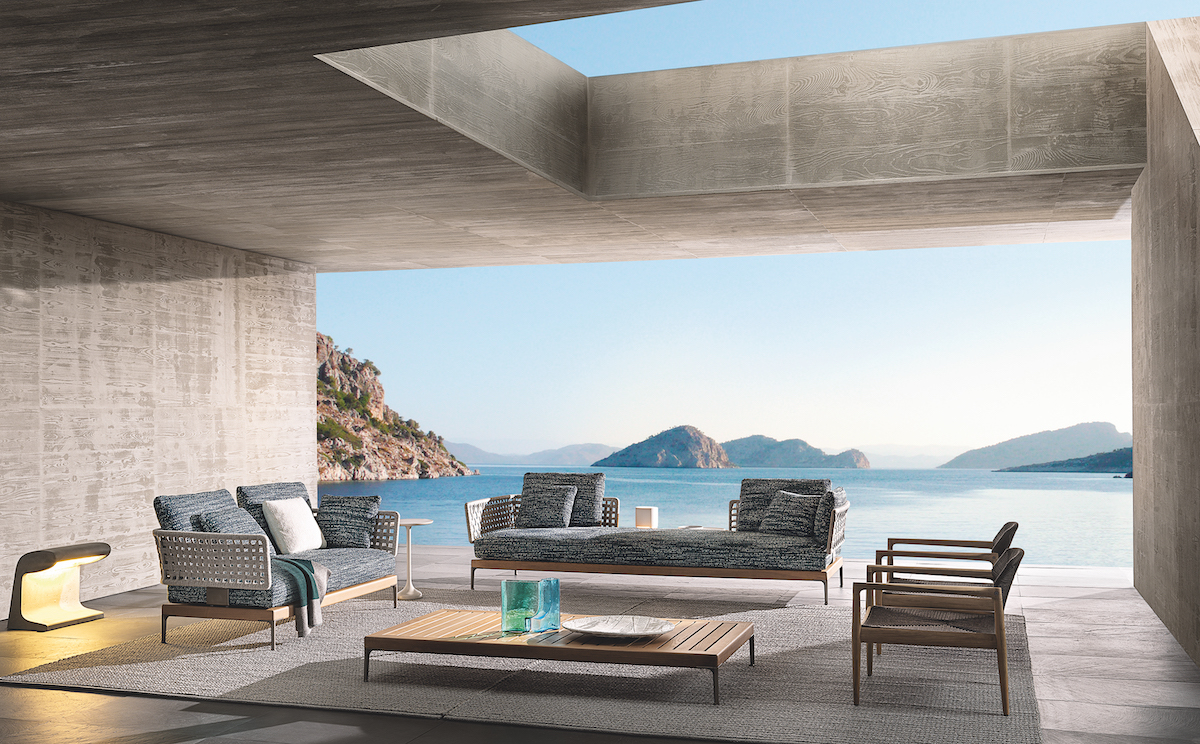
Image caption: Patio Teak, designed by GamFratesi. | Image credit: Minotti
In recent years, with boundaries being continuously blurred between indoors and out, the design demand for luxury outdoor furniture has challenged Minotti to explore innovative ways to offer premium outdoor collections that speak the same language of its iconic indoor seating configurations. Cue the arrival of the 2022 Outdoor Collection reaffirms the brand’s unequivocal and increasingly strong desire to transfer the aesthetics of indoor living to premium outdoor spaces. The identity of the Outdoor Collection has been shaped by contributions from Rodolfo Dordoni, Gordon Guillamier and Inoda+Sveje. GamFratesi’s involvement came in the modification of the Patio, which first launched in 2021. The wooden frame of Patio Teak, chosen to create a more natural aesthetic that is easier to combine with other furnishing pieces in the outdoor collection, thus joins the version with aluminium base, borrowing the structure of its backrest in Ecru polypropylene rope. Some of the seating elements of Patio and Patio Teak feature a handy tray in natural teak, with grooves for draining water.
The introduction of the Patio version in wood enriches and multiplies the transversal nature of the system, which can thus be adapted to multiple environments and contexts, meeting all aesthetic and formal requirements.
As ever, Minotti has delivered a real – in every senses – exploration of new creative horizons that incorporates shapes, images and cultural references from around the world; heralding a new, important stage in the inspirational pathway of Minotti.
> Since you’re here, why not read our exclusive interview, on the DESIGN POD podcast, with GamFratesi?
Main image credit: Minotti





